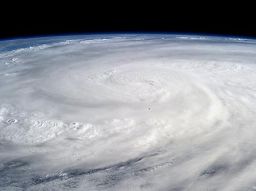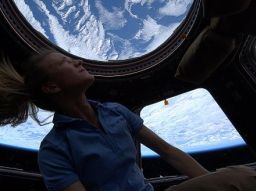Leading Women connects you to extraordinary women of our time – remarkable professionals who have made it to the top in all areas of business, the arts, sport, culture, science and more.
Story highlights
NASA astronaut captures typhoon Haiyan over Philippines, from space
Karen Nyberg speaks to CNN after 166-day mission in space
Conducted experiments on astronauts' eyesight and bone density
Floating high above the Earth, astronaut Karen Nyberg pointed her camera at a swirling white cloud spreading across the planet. Little did she know the devastation that was unfurling beneath.
This remarkable image of Super Typhoon Haiyan over the Philippines, was taken by the NASA astronaut during a five-month mission in space.

It was one of many specular photographs taken by Nyberg – who in 2008 became the 50th woman in space – and was retweeted thousands of times by her followers back on Earth.
CNN spoke to the mechanical engineering professor earlier this year, in a live broadcast from the International Space Station.
As she returned to Earth this week, we again caught up with the American astronaut to chat about her fascinating experiments and adjusting to life back on the blue planet.
CNN: What was it like, taking a photograph like that and realizing the impact it might have on Earth as you looked out the window?
Karen Nyberg: It definitely makes you think, because it’s so beautiful when you look out the window. I couldn’t even fit the entire storm in one picture. I used a 50 millimeter lens to capture as much as I could, but just knowing the devastation underneath this beautiful cloud is pretty sad.

CNN: You’ve also taken some other photographs which have been just as beautiful, and not caused such a devastating impact – like sunrises over Earth.
KN: Yes, I love taking pictures and I enjoyed it more and more as the mission went on – that’s probably one of the things I’ll miss the most. It was a great geography lesson for me too, to get these images from all over the world.
CNN: Do you see the world in the same way, as before you went up as an astronaut?
KN: You actually do see it a little differently – in a strange way you feel closer to everybody. I wish everybody could experience that.
CNN: What sort of experiments were you working on while you were up there?
KN: A lot of the experiments were being done on us – looking at our eyesight and how that changes, and looking at our bone density and how that changes by the effects of micro gravity.
We also did a lot of experiments on fluids and combustion – a lot of these are for developing systems to travel further into outer space, and a lot of them will really benefit what we’re doing on Earth.

CNN: A lot of astronauts apparently experience long-term vision problems after returning to Earth – is that something that’s happened to you, and do you know what causes it?
KN: I had some vision changes during my stay on the space station, but it’s coming back to normal again – I think that’s happened frequently to other astronauts. I haven’t experienced long-term changes but we have done quite intensive studies on me and my crew mates.
CNN: What are other changes you’ve noticed since coming back to Earth?

KN: It seems like I never left in a lot of ways – it’s almost a time warp. You get back to home and work, and it’s like you were never away. I think I’ll need to go back and look at my pictures pretty soon and reminisce.
To see more of Karen Nyberg’s photographs from space, follow her on Twitter or like her on Facebook. Learn more about the history of women in space.






